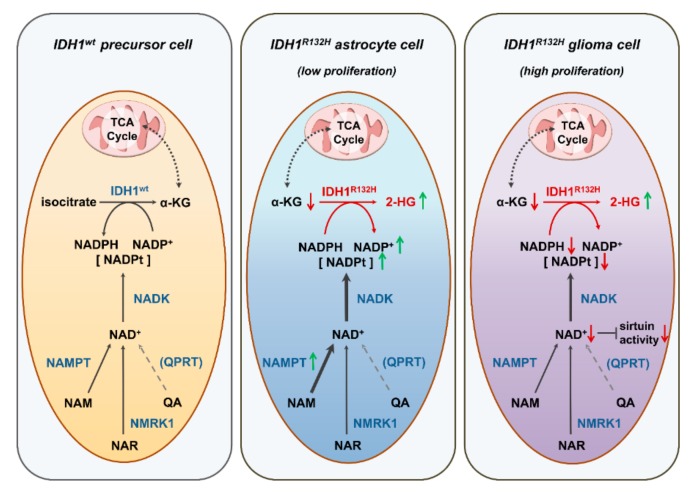Figure 5.
Proposed hypothesis of different effects of the IDH1R132H mutation in glial and tumor cells: We found that the IDH1R132H mutation differently affects the redox state of glial cells and tumor cells. Wildtype IDH1 provides essential amounts of NADPH for the cell whereas IDH1R132H consumes α-KG and NAPDH, leading to abnormally high concentrations of 2-HG, reduced concentrations of α-KG and downstream TCA cycle metabolites, as well as an imbalance between NADPH and NADP+ levels. Based on our observations, we hypothesize that in astrocytes, the increased NADPH consumption by IDH1R132H can still be compensated for by elevating the total NADP pool via the induction of NADK and the NAD+ synthesizing enzyme NAMPT. Malignant, proliferating cells, however, cannot compensate for the imbalance of NADPH/NADP+ due to IDH1R132H, leading to decreased NADPH and NAD+ levels. This could be due to the increased requirement of NAD+ and/or NADPH in proliferating cells or insufficient upregulation of NAD synthesis pathways, potentially accompanied by additional inhibition of NAMPT expression due to the IDH1R132H. Abbreviations: NAD = nicotinamide adenine dinucleotide, NADP = nicotinamide adenine dinucleotide phosphate, NMRK1 = nicotinamide riboside kinase, NAMPT = nicotinaminde phosphoribosyltransferase, QPRT = quinolinic acid phosphoribosyltransferase, NADK = NAD-Kinase.

